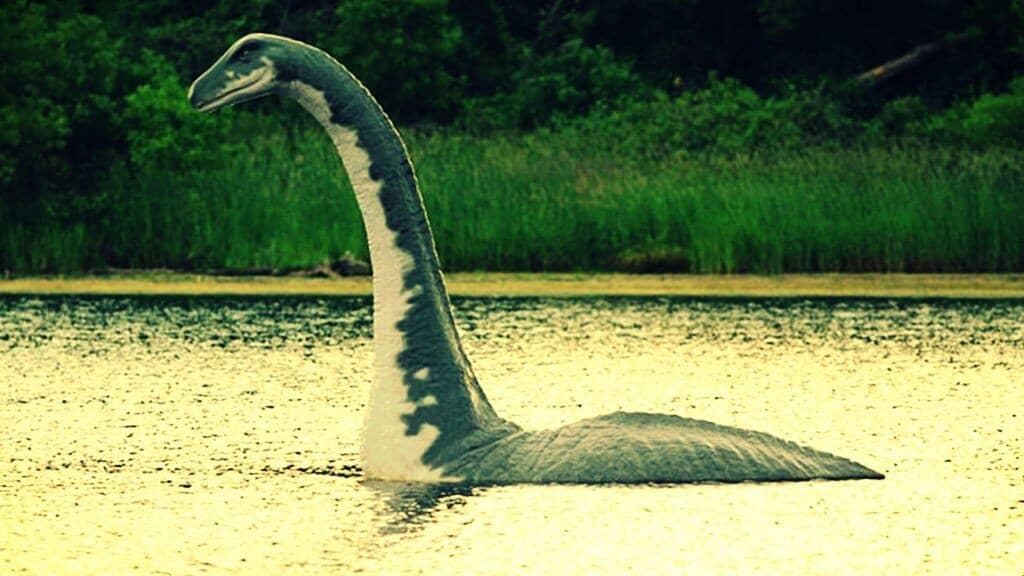Several decades ago, scientist Adrian Shine dedicated forty years of his life to unraveling the mysteries of Loch Ness. His tireless efforts included day and night patrols, countless photographs, and the use of cutting-edge technology in his quest to discover the truth behind the legendary Loch Ness Monster.
Loch Ness Monster
The Origin of a Scottish Legend
A quarter of a century ago, Shine led what was, at the time, the most ambitious search for the monster: Operation Deepscan.
This project, which cost over one and a half million dollars and lasted a week, utilized a fleet of 24 boats equipped with state-of-the-art sonar to explore the enigmatic lake, 227 meters deep and 36 kilometers long, located in Scotland’s majestic highlands.
Yet, despite the efforts and advanced technology, the mystery of the Loch Ness Monster remained unsolved, demonstrating that Shine was not the only one enchanted by this allure.
The Charm of Loch Ness and Its Monster
Willie Cameron, a tourism expert in the Highlands, revealed that approximately one million people visit Loch Ness and its surroundings each year, generating an economic impact of nearly 40 million dollars. Surprisingly, over 85% of these tourists are drawn by the legend of the monster.
Cameron likened the Loch Ness phenomenon to global icons like Elvis Presley, Madonna, or Coca-Cola. But, when did Nessie achieve its mythical status, and what lies behind this fascination to find it?
Jonathan Downes from the Centre for Fortean Zoology pointed out that the legend of the monster dates back to the 6th century. However, its popularity soared in the 1930s, with a series of sightings that amassed over a thousand testimonials.
Descriptions of the monster are primarily divided into two theories: one suggesting a sea serpent and another proposing Nessie is a plesiosaur, a marine dinosaur from the early Jurassic period. Downes, while skeptical, acknowledged the allure of the idea:
“To think of a giant prehistoric reptile in the 21st century is an irresistibly romantic and unlikely fantasy.”
Between Evidence and Illusions
The Enigma of the Loch Ness Monster
Jonathan Downes, an expert in mysterious creatures, points out a paradox about the Loch Ness Monster: despite being the most emblematic creature in the world of mysteries, it has the least tangible evidence to support its existence. The proofs presented over the years have invariably been false alarms.
For instance, footprints attributed to Nessie turned out to belong to a hippopotamus or a stuffed elephant, and a supposed “monster body” washed ashore in 1972 was a deceased elephant seal.
This demonstrates that most of the Nessie legend is based on stories and sightings rather than concrete evidence.
The Subjectivity of Sightings
Adrian Shine, who has dedicated a significant portion of his life to studying Loch Ness, has firsthand experience of how easily observations can be misinterpreted.
In the 1970s, while paddling in Lake Morar, near Ness and also known for its monster sightings, Shine thought he saw the classic profile of the monster, only to realize it was a uniquely shaped rock.
This incident led him to question the reliability of eyewitness testimonies. Shine admits that discerning the honesty of Loch Ness’s witnesses is challenging.
Willie Cameron, well-versed in local culture, mentions that many residents firmly believe in the existence of something mysterious in the lake. He even shares a personal anecdote: in 1965, his father and nine others saw something inexplicable, an object moving against the wind and indescribable.
Operation Deepscan Results
Mysterious and Unresolved
During Operation Deepscan, three significant “contacts” were recorded on the scanners, appearing as crescent-shaped marks. Some argued that these marks were too large and deep to be attributed to any known creature.
On the other hand, there are suggestions that they could have been caused by a seal or a school of salmon. Adrian Shine, leading the Loch Ness and Morar Project, firmly believes that the allure of the Nessie myth lies in its unresolvability.
While he dismisses the idea of the famous inhabitant of Scottish waters being a dinosaur, he proposes an intriguing hypothesis: the presence of a “Jurassic creature,” specifically an Atlantic sturgeon.
These fish, known for their imposing size and unique physical characteristics, are not native to Scotland, but Shine suggests they could have reached Loch Ness in search of new habitats. Imagine one of these behemoths swimming into the lake and, after being sighted, disappearing leaving nothing but a mystery in its wake.
The Legend of Nessie and Its Multiple Interpretations
The theories surrounding Nessie are as varied as they are fascinating. Jonathan Downes considers the possibility of a “gigantism gene” in an eel, thus explaining its enormous size.
Meanwhile, Willie Cameron points to confusion with other creatures like large nocturnal invertebrates, seals, sharks, or large dolphins from the sea as possible explanations for the sightings. Despite these hypotheses, Shine emphasizes a crucial point: even if the sturgeon theory were confirmed, the mystery of Nessie would not dissipate.
“If anything, Operation Deepscan has shown that science cannot kill a legend,” he asserts confidently. And Cameron agrees: the fascination with the Loch Ness Monster is already part of the collective psyche, a mystery that captivates and unites people in their love for the unknown.
In conclusion, the Loch Ness Monster, with its multiple interpretations and theories, continues to be a symbol of mystery and fascination, an enigma that defies time and science and remains ingrained in the popular imagination as one of Scotland’s most intriguing myths.




